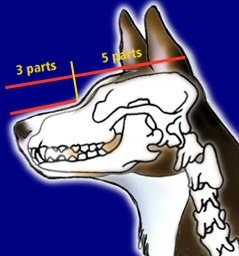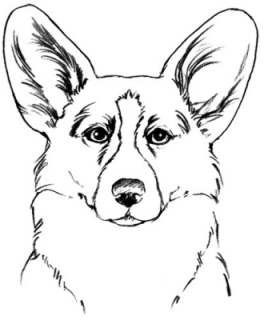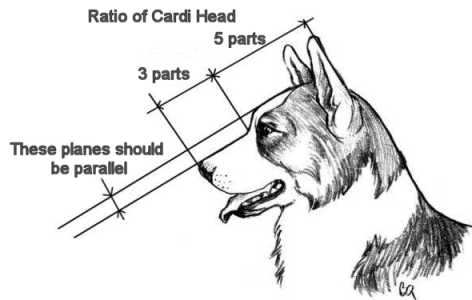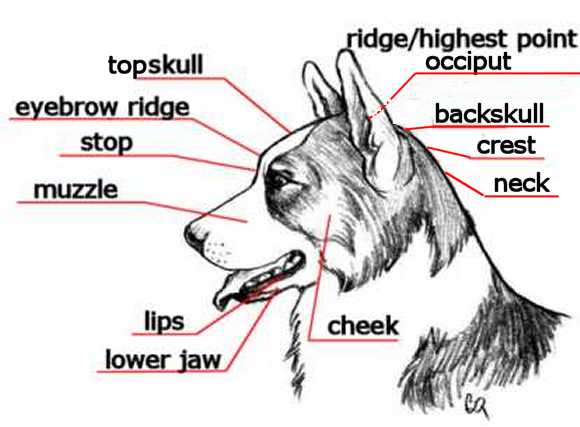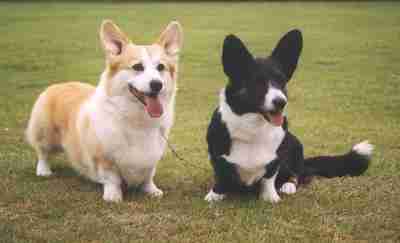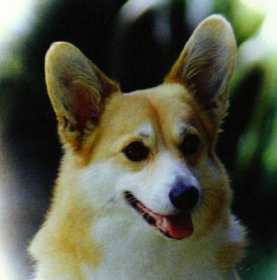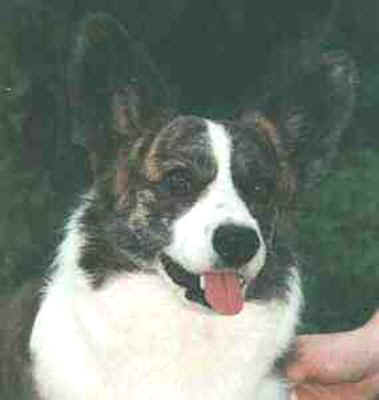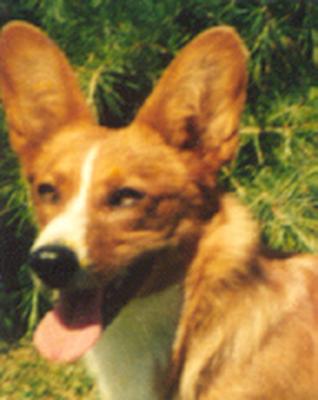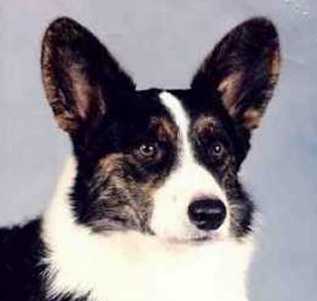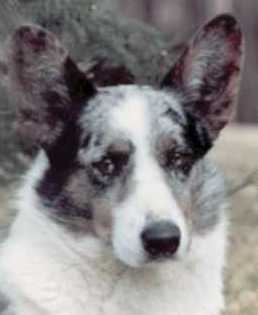UK and FCI -
standard:
HEAD AND SKULL
Head foxy in shape and appearance, skull wide and flat between ears tapering towards eyes
above which it is slightly domed. Moderate stop. Length of foreface in proportion to head
3 to 5, muzzle tapering moderately towards nose which projects slightly and is no sense
blunt. Underjaw clean cut. Strong but without prominence. Nose black.
EYES
Medium size, clear, giving kindly, alert but watchful expression. Rather widely set with
comers clearly defined. Preferably dark, or to blend with coat, rims dark. One or both
eyes pale blue, blue or blue flecked, permissible only in blue merles.
EARS
Erect, proportionately rather large to size of dog. Tips slightly rounded, moderately wide
at base and set about 9 cms (3 1/2 ins) apart. Carried so that tips are slightly wide of
straight line drawn from tip of nose through centre of eyes, and set well back so that
they can be laid flat along neck.
MOUTH
Teeth strong, with scissor bite i.e. Upper teeth closely overlapping the lower teeth and
set square to the jaws.
American - standard:
Head
The head should be refined in accordance with the sex and substance of the dog. It should
never appear so large and heavy nor so small and fine as to be out of balance with the
rest of the dog. Expression- alert and gentle, watchful, yet friendly.
Eyes - medium to large, not bulging, with dark rims and distinct corners. Widely set.
Clear and dark in harmony with coat color. Blue eyes (including partially blue eyes), or
one dark and one blue eye permissible in blue merles, and in any other coat color than
blue merle are a disqualification. Ears - large and prominent in proportion to size
of dog. Slightly rounded at the tip, and of good strong leather. Moderately wide at the
base, carried erect and sloping slightly forward when alert. When erect, tips are slightly
wide of a straight line drawn from the tip of the nose through the center of the eye.
Small and/or pointed ears are serious faults. Drop ears are a disqualification. Skull -Top
moderately wide and flat between the ears, showing no prominence of occiput, tapering
towards the eyes. Slight depression between the eyes. Cheeks -f lat with some chiseling
where the cheek meets the foreface and under the eye. There should be no prominence of
cheekbone. Muzzle - from the tip of the nose to the base of the stop should be shorter
than the length of the skull from the base of the stop to the high point of the occiput,
the proportion being about three parts muzzle to five parts skull; rounded but not blunt;
tapered but not pointed. In profile the plane of the muzzle should parallel that of the
skull, but on a lower level due to a definite but moderate stop. Nose - black, except in
blue merles where black noses are preferred but butterfly noses are tolerated. A nose
other than solid black in any other color is a disqualification. Lips - fit cleanly and
evenly together all around. Jaws - strong and clean. Underjaw moderately deep and well
formed, reaching to the base of the nose and rounded at the chin. Teeth strong and
regular. Scissors bite preferred; i.e., inner side of upper incisors fitting
closely over outer side of lower incisors. Overshot, undershot, or wry bite are serious
faults. |
